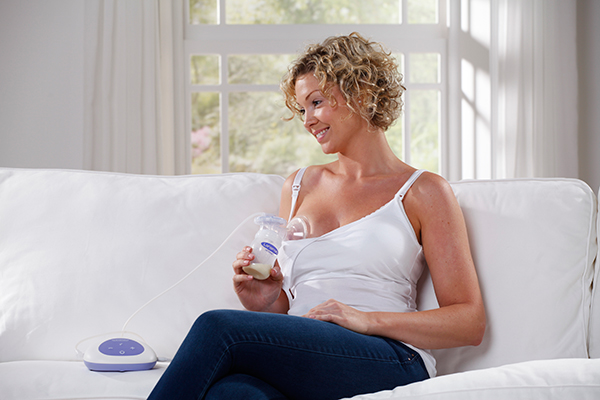Advice Articles
- Home
- Advice Articles
- Baby Skincare
- Pumping Basics
Pumping Basics

Expressing breastmilk is the act of removing milk from your breast, either by hand or using a manual or electric pump. You may want to express milk if:
- your breasts feel uncomfortably full
- you will be spending some time away from your baby and would like someone else to give him your breastmilk, or are returning to work
- your baby is not feeding well (for example if your baby was born with a cleft lip or palate)
- your baby was born early and you need to stimulate your milk supply for when he is ready to suckle from the breast
There are a few different ways to express your breastmilk. Breastmilk can be expressed by hand, gently and rhythmically press down on your breasts, making a C shape with your thumb and forefinger. The trick to this technique is to press the milk ducts behind your nipple. If you squeeze just the nipple you won’t get milk and it will more than likely hurt! Many mothers use a pump to express breastmilk, both manual and electric pumps are available, with both single and electric pumps working well.
Once you have your breast pump set up it is best to be seated whilst expressing. It sometimes helps to have a picture of your baby with you as this can encourage the release of a special hormone that encourages your body to produce breastmilk (clever really isn’t it?!) It’s also important to keep a drink nearby (water for example) so that you can stay hydrated during your expressing session.
If your breastmilk is freshly expressed it can keep for up to 6 hours without refrigeration. Breastmilk can be stored in a fridge at 5 to 10 degrees Celsius for up to 3 days and a fridge 0 to 4 degrees Celsius for up to 8 days. You can store milk in a freezer at -18 degrees Celsius or below for up to 6 months.
When placing your milk in the fridge, place it in the coldest part of the fridge, which is generally right at the back. Try to avoid storing it in the door as this is the warmest part of the fridge and can cause bacteria to grow.
Expressed breastmilk can be fed to your baby straight from the fridge, alternatively it can be warmed by placing the container in warm water to take the chill off slightly. Take care not to over warm and check the temperature before feeding to baby.
Some mothers express a little colostrum (first milk, rich in carbohydrates, protein and antibodies) to freeze during the last trimester of pregnancy, in case either they or their baby face feeding difficulties at birth.
If you are expressing shortly after birth colostrum can be stored at temperatures of up to 32ºC for 12 hours for a full term baby. You will express very small quantities, say a teaspoon or so each time, for the first couple of days. On about day 3 – 5 after your baby is born, your breasts will start to produce ‘mature milk’. The volume of milk you produce will increase.
If your baby is unable to come to your breast it is important to begin expressing as soon as you are able, and toexpressing breastmilk as often as your baby would feed, about 8-12 times in 24 hours in the early days.
Problems Pumping?
Expression of breastmilk is a learned skill, so don’t be disheartened if you do not seem to be expressing much milk at first.
Pumps work by generating and releasing suction to remove milk from the breast. You may find it helps if you prepare a little beforehand.
Stress and cool body temperature can make pumping less productive, so you could try using a warm compress, breast massage and relaxation techniques. It also helps to have a photograph of your baby to look at, or a piece of his recently worn clothing to remind you of his smell. You may find that after an early morning feed is a good time to express, as often your supply is plentiful at this time. You can, of course, express whenever and how often you need to. You can also express from one breast while your baby is feeding from the other side.
See below for our full range of breast pumps.
